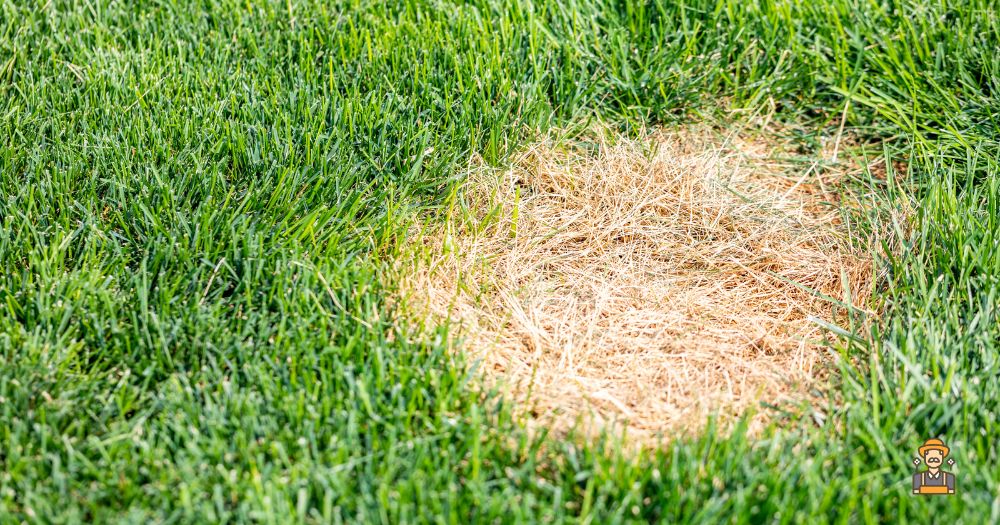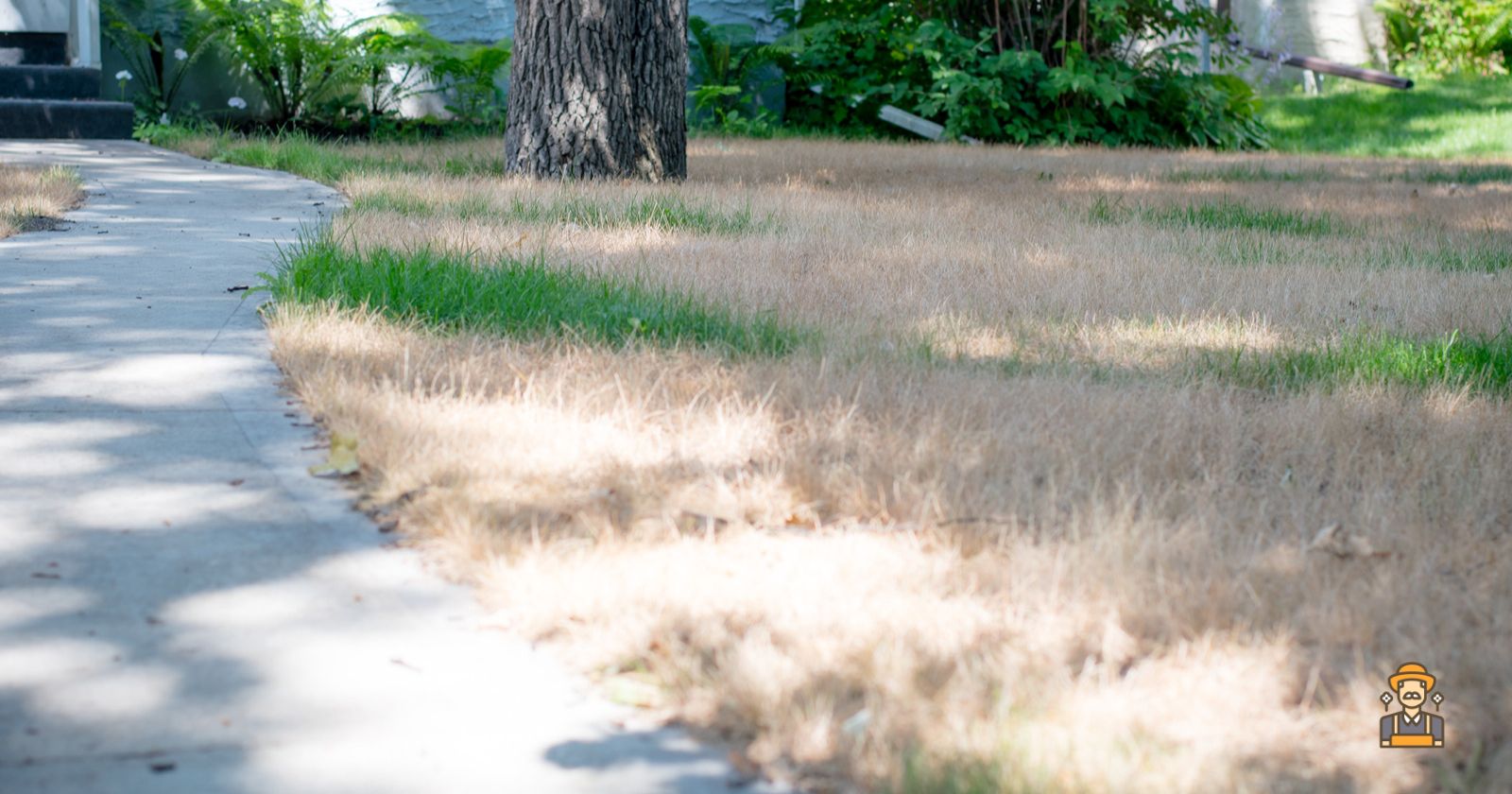Have you ever wondered will salt water kill grass? It’s a common question, especially for those looking for a natural method to eliminate unwanted grasses or weeds. In fact, salt water can be a useful tool for controlling vegetation, but it’s important to understand the mechanism behind it and how it may affect your lawn.
It’s true that salt water can be harmful to grass, as the sodium chloride disrupts the plant’s internal water balance and leads to dehydration. The degree of damage depends on the concentration of salt in the water and the type of grass you have. Some turfgrasses like St. Augustine, Bermuda, and zoysia are less sensitive to salt, but even they can be killed if exposed to excessive amounts of salt water (The Lawn Mower Guru).
Before you consider using salt water as a solution, be aware that it can have negative environmental impacts. Salt can enter the soil and make its way into groundwater and rivers, potentially harming plants and animals (Gardeners Mag). To avoid unintended consequences, it’s essential to find a balance between controlling unwanted grass and safeguarding the health of your lawn and the environment.
Effects of Salt Water on Grass

When salt water comes into contact with your grass, it can cause a variety of issues. Understanding these effects can help you identify and address salt water damage to your lawn. In this section, we’ll discuss two key problems caused by salt water: Dehydration and Nutrient Imbalance.
Dehydration
Salt water can cause dehydration in your grass, leading to wilted or dead leaves. This occurs because salt water disrupts the natural process of osmosis, drawing water out of the grass blades and leaving them parched(InsideYard). As leaves dehydrate, your grass could become yellow, brittle, and more susceptible to damage from external stressors.
Nutrient Imbalance
Beyond dehydration, salt water can also harm your grass by disrupting its nutrient absorption. The salt can damage the roots, making it difficult for the plant to absorb moisture and nutrients from the soil (GFL Outdoors). Consequently, this nutrient imbalance can result in yellowing, browning, and patchy areas in your lawn. Additionally, salt water may kill beneficial bacteria and fungi that help your grass grow, further contributing to an unhealthy lawn (GFL Outdoors).
When dealing with salt water damage to your lawn, it’s important to address both dehydration and nutrient imbalances. Proper lawn care and management techniques can help mitigate these issues and promote a healthy, vibrant lawn.
Factors Influencing Salt Water Damage
Grass Species
Different grass species have varying levels of tolerance to saltwater. Some species are more resistant to the negative effects of saltwater exposure, while others may suffer significant damage or even die. It’s essential for you to understand the specific salt tolerance of the grass species in your lawn, as this will help you take proper measures to prevent damage from saltwater exposure. For example, turfgrass species vary in their tolerance to salt.
Salt Concentration
The concentration of salt in the water plays a significant role in determining the extent of damage to your grass. If the salt concentration is high enough, it can cause dehydration in the plant and disrupt its ability to absorb water and nutrients from the soil, effectively killing it. Lower salt concentrations may cause stress but not necessarily kill the grass. InsideYardreveals, it takes varying amounts of time for saltwater to kill grass, depending on factors like the salt concentration.
Frequency of Exposure
The frequency of saltwater exposure also influences the severity of damage to your grass. Occasional exposure to saltwater might not inflict lasting harm, especially if the grass species is salt-tolerant and conditions allow for proper drainage. However, frequent or continuous exposure increases the likelihood of dehydration, reduced nutrient absorption, and eventual death of the grass. It is essential for you to be aware of the potential sources of saltwater, such as storm surges, irrigation water with a high salt content, or runoff from roads treated with deicing salts, to better protect your lawn.
Preventing Salt Water Damage to Grass
In order to protect your grass from salt water damage, it is essential to follow some preventative measures. By focusing on proper watering techniques, choosing salt-tolerant grass species, and using physical barriers, you can effectively minimize the impact of salt water on your lawn.
Proper Watering Techniques
Applying appropriate watering methods is crucial in preventing salt buildup in your soil. To do so, deeply water your lawn to encourage strong root growth and help flush out any excess salt. Make sure to avoid overwatering, which can promote shallow root development and further salt accumulation. Remember that watering frequency should depend on the specific needs of your grass type and climate conditions.
Salt-Tolerant Grass Species
When selecting a grass species for your lawn, it’s important to consider its salt tolerance. Some grass varieties are better adapted to withstand salty conditions, making them a better choice for areas prone to salt water exposure. Consider planting one of these salt-tolerant species:
Using Physical Barriers
Another effective method to prevent salt water damage is the use of physical barriers. Installing barriers such as burlap barriers or snow fencing can help block salt spray from reaching your lawn, especially during stormy weather. Additionally, you can plant salt-tolerant shrubs or hedges strategically around your lawn to shield the grass from salt exposure.
Recovering from Salt Water Damage
When your lawn has been exposed to salt water, it is crucial to take appropriate steps to help it recover. The following sub-sections will guide you through the process of restoring your grass back to a healthy state.
Flushing with Fresh Water
One of the primary ways to help your lawn recover from salt water damage is by flushing the affected area with fresh water. This will aid in diluting and washing away the accumulated salts in the soil. It is recommended to irrigate the affected area heavily and consistently for a few weeks, ensuring that the water penetrates deep into the root zone. This will help to flush out any residual salt trapped within the soil, allowing your grass to breathe and regain its health. Be careful not to overwater, as this may lead to further complications such as root rot.
Soil Amendments
Applying soil amendments can also contribute to the recovery process by neutralizing salinity and improving soil structure. One such amendment is gypsum, which can be applied at a rate of 10 pounds per 1000 square feet on the affected lawn area. Spread gypsum evenly over the lawn and repeat the application five times at four-week intervals, followed by heavy irrigation after each application. This will help to counteract the high salt levels in your soil and create a more favorable environment for your grass to thrive (Walter Reeves).
Re-seeding or Re-sodding

In some cases, where the grass has been severely damaged or killed by salt water, you may need to consider re-seeding or re-sodding the area to promote new growth. Before doing this, it is important to ensure that the soil is no longer saline. One way to test the soil is by planting a few squash seeds in it at weekly intervals. If the seedlings emerge but die within a few days, this is an indication that the soil is still too saline for successful grass growth. Continue the flushing and soil amendment processes until the test plantings survive and establish themselves, indicating a suitable environment for re-seeding or re-sodding your lawn.
By following these steps, you will be on your way to restoring your lawn’s health and vitality after salt water damage.
FAQ’s
Let’s dive into these salty inquiries, shall we?
Will grass grow back after salt?
Although salt can damage or kill grass, it’s possible for your lawn to recover, given the right conditions and care. Flushing the area with fresh water, applying soil amendments like gypsum, and re-seeding or re-sodding, if necessary, can help rejuvenate your lawn and encourage new growth.
How long does it take for salt to kill weeds?
The speed at which salt sends weeds to their doom varies, depending on factors such as the type of weed, the salt concentration, and environmental conditions. Generally, salt can work its weed-whacking magic within a few hours to a couple of days, withering those unwelcome intruders as they succumb to dehydration and nutrient deficiencies.
How much salt does it take to kill grass?
The lethal dose of salt for grass depends on several factors, such as the grass species, salt concentration, and frequency of exposure. While a lower concentration may simply stress your grass, a high concentration can be a one-way ticket to wilted, yellow blades of doom.
So Will Salt Water Kill Grass?
We’ve ventured through the salty seas of grass warfare and uncovered some surprising truths about salt water’s impact on our precious lawns. As you can see, salt water can indeed be a formidable foe to grass, but with the right knowledge and care, your lawn can bounce back and flourish once more. Just remember to weigh the pros and cons, and consider the environmental implications before you go unleashing a salty tsunami on those pesky weeds. May your lawn forever be a lush, green oasis, and may you be the envy of your neighbors for years to come. Until our next lawn care adventure, happy gardening!
